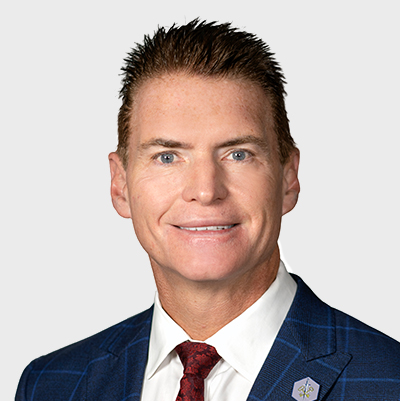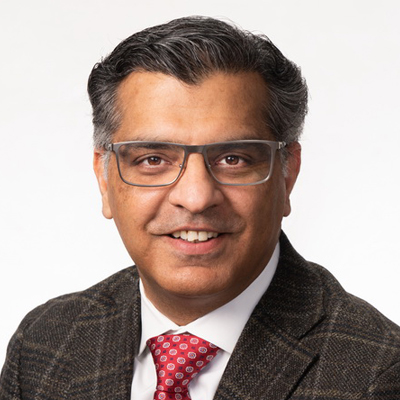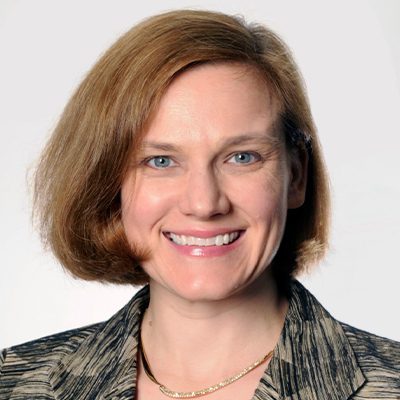CURIOSITY, POLITICS, AND THE ENDGAME
The Best Way to Lead and Practice
IN THIS ISSUE:
- Chairman’s Corner
- Advocacy and Policy
- Policy Update
- Publications
- Young Innovators
- Fellowship Corner
- President’s Corner
CHAIRMAN’S CORNER
Curiosity
That is the word on my mind for this edition of the Chairman’s Corner. Recently, I was asked by a colleague in the world of industry: “Why would we want to publish best practices about any topic until all research questions had been answered?” And the opinion was purely based on high-level prospective evidence.
I smiled as I replied, telling him our main reason was to provide guidance based on what we know but, even more importantly, to stimulate new questions for us to explore, fueling our curiosity.
You see, having led consensus statements for over two decades, I have learned that the most important trait is to be curious about whether our opinions and evidence grading represent the best practice. Many times, I have debated with other physicians who were so certain they were correct about an issue that they dampened the natural curiosity of many younger and more skeptical colleagues. Certainty can be a significant impediment when coupled with a closed mind.
This leads me to the reason I established NEURON and why I believe it will set the standard for future consensus in the fields of interventional spine, neuromodulation, physician education, and regenerative medicine.
Not only does NEURON strive to provide the best answers based on the current level of evidence and expert opinion, but our collaboration with Michael Schatman, PhD, and the editorial team of the Journal of Pain Research allows us to make real-time updates as new peer-reviewed literature becomes available. This will also offer our young innovators the opportunity to showcase their talents as authors of these crucial updates.
Politics
Another important goal of NEURON is to focus on science, evidence, and patient access. In my experience, many previous consensus guides have been bogged down by the politics of authorship, excessive editorial involvement, the need to support predetermined goals, a desire to satisfy third parties, and favoritism that often results in authors who contribute little work or effort to produce true best practices. We are fortunate at ASPN to have many dedicated members who serve as selfless volunteers, enabling us to avoid many of these pitfalls. Our aim is to have a committed and well-educated group of healthcare professionals working together to create the most researched, evidence-based opinions possible.
The diverse writing teams for each project bring a central goal of enhancing the field in terms of both patient safety and efficacy. The first NEURON paper on resident and fellow education is now published, and in the coming months, we will see new NEURON expert guidance on Diabetic Neuropathy (SWEET), Closed Loop in Spine and Nerve, Neuromodulation for Non-Surgical Back Pain, Spinal Stenosis, and Regenerative Medicine.
In addition, teams are currently being organized to write on topics like Endoscopic Surgery, SI Joint Fusion, Peripheral Nerve Stimulation, Advanced Practice Provider Best Practices, and Artificial Intelligence in Spine and Nerve Care. Additional larger projects are scheduled for launch in 2024.
Endgame
The goal of NEURON is to bring together a group of experts to establish best practices and consensus guidelines on critical topics to improve patient care, safety, and efficacy.
Working together, I believe we can achieve this important goal. In that spirit, the ability to combine the efforts of Interventional Spine, Interventional Radiology, Ortho Spine, and Neurosurgery creates a unique opportunity to elevate all of these fields while advancing healthcare in the United States and throughout the world.
ASPN ADVOCACY & POLICY
ASPN Advocacy & Policy Committee continues to advocate for access to evidence-based therapy for its members.
On Oct 3rd, 2023, ASPN submitted comments in response to the HCSC (Blue Cross Blue Shield of TX, IL, NM, OK, MT) commercial draft policy that categorized mild® Procedure as investigational. We presented our ASPN BACK guidelines to support access for this evidence-based therapy.
We also provided a rebuttal letter to WASHINGTON STATE HEALTH CARE AUTHORITY SEPTEMBER l, 2023 DRAFT EVIDENCE REPORT SPINAL CORD STIMULATION (SCS) REREVIEW. We made it clear that their report does not align with the clinical practice of pain management and lacks “clinical validity.”
We continue to work tirelessly for our members. Please feel free to reach out if you have policy-related challenges in your region.
POLICY UPDATE
In the latest issue of the American Society of Pain and Neuroscience (ASPN) newsletter, significant changes in the descriptors for neurostimulation codes, particularly in spinal cord stimulation (SCS) codes 63685 and 63688, were discussed for the fiscal year 2024.
Of particular concern is the revision to code 63688, which involves the removal of an implanted spinal neurostimulator pulse generator or receiver with a detachable connection to the electrode array. The Centers for Medicare & Medicaid Services (CMS) is considering reducing the work relative value units (RVUs) for this code from its current value of 5.30 to 4.35.
This potential reduction has raised substantial objections within the medical community as it could significantly impact reimbursement for revisions, potentially making the procedure financially unviable.
In parallel, the 116th Congress introduced HR 2474 in April 2023, aimed at updating the Medicare physician fee schedule to provide a single conversion factor based on the Medicare Economic Index.
Sponsored by Representative Raul Ruiz of California’s 36th district, the bill seeks to address payment uncertainties affecting Medicare participating physicians and prevent potential opt-outs by physicians from Medicare, ultimately safeguarding Medicare beneficiaries’ access to care.
Although the bill has gained support from both Democrats and Republicans, it currently awaits action in the health subcommittee of the Energy and Commerce Committee, with its fate uncertain amidst other legislative priorities and ongoing political developments.
PUBLICATIONS
Informed Consent Best Practice Guidelines & Recent Neuromodulation Studies
Recently accepted for publication is ASPN’s Best Practice Guidelines on Informed Consent for Spinal Procedures. These guidelines were developed by a
multidisciplinary panel consisting of anesthesiologists, physiatrists, interventional radiologists, orthopedic and neurosurgery, psychologist/medical ethicist, and advanced practice providers (APPs).
A total of eight best practice categories were developed by the panel with specific recommendations. This publication will be available open access through the Journal of Pain Research.
This month we also highlight other publications whose authorship included ASPN faculty and members. These selected publications have implications in the field of neuromodulation, specifically in regards to improving the patient experience and ever-expanding diagnostic indications.
In a recent publication by Staats et al., “Remote Management of Spinal Cord Stimulation Devices for Chronic Pain: Expert Recommendations on Best Practices for Proper Utilization and Future Considerations,” authors detail recent advancements in remote monitoring and programming for spinal cord stimulation therapy. The authors propose consensus recommendations for use and frequency of remote monitoring, implementation of remote programming into practice and consideration for Remote Physiologic Monitoring (RPM) and Remote Therapeutic Monitoring (RTM) reimbursement.
Deer et al. recently published data from a multicentered, prospective randomized controlled t rial evaluating the efficacy of BurstDR spinal cord stimulation waveform compared to conventional medical management (CMM) in patients with chronic, refractory axial and non-surgical low back pain. The primary end point showed substantial improvements in pain intensity. In an ITT analysis, 73.1% of subjects randomized to scs responded with 50% greater pain relief compared with 6.2% randomized to CMM ( 95% Cl: 54.3- 76.75) at six-month follow-up.
These findings are consistent with previous published data by Kapural et al., utilizing lOkHz stimulation utilizing similar inclusion criteria. Preliminary data from these recent landmark studies suggest spinal cord stimulation is effective in treating non-surgical low back pain symptoms.
- Staats P, Deer TR, Hunter C, Lis, Dickerson D, Petersen E, Kapural L, Durbhakula S, Gilligan C, Slavin KV, Pope J, Amirdelfan K, Poree L, Naidu R, Levy RM. Remote Management of Spinal Cord Stimulation Devices for Chronic Pain: Expert Recommendations on Best Practices for Proper Utilization and Future Considerations. Neuromodulation. 2023 Aug 25:Sl094-7159(23)00705-5.
- Deer T, Gilligan C, Falowski s, Desai M, Pilitsis J, Jameson J, Moeschler s, Heros R, Tavel E, Christopher A, Patterson D, Wahezi s, Weisbein J, Antony A, Funk R, Ibrahim M, Lim C, Wilson D, Fishell M, Scarfo K, Dickerson D, Braun E, Buchanan P, Levy RM, Miller N, Duncan J, Xu J, Candido K, Kreiner s, Fahey ME, Yue J. Treatment of Refractory Low Back Pain Using Passive Recharge Burst in Patients Without Options for Corrective Surgery: Findings and Results From the DISTINCT Study, a Prospective Randomized Multicenter Controlled Trial. Neuromodulation. 2023 Aug 28:Sl094-7159(23)00712-2.
- Kapural L, Jameson J, Johnson C, Kloster D, Calodney A, Kosek P, Pilitsis J, Bendel M, Petersen E, Wu C, Cherry T, Lad SP, Yu C, Sayed D, Goree J, Lyons MK, Sack A, Bruce D, Rubenstein F, Province-Azalde R, Caraway D, Patel NP. Treatment of nonsurgical refractory back pain with high-frequency spinal cord stimulation at 10 kHz: 12-month results of a pragmatic, multicenter, randomized controlled trial. J Neurosurg Spine. 2022 Feb 11:1-12.
YOUNG INNOVATORS
ASPN Young Innovators Committee had an incredibly successful CME webinar on Continuing Education and Board Preparation and additionally webinar A on Surgical Skills and Wound Care.
On November 29, we are planning to host a CME webinar on Sacrolliac Joint PainDiagnostic Workup, Management and Surgical Intervention.
We are excited to launch the Poster to Podium Young Innovators track this year and are closely working with the participants to work on quality research presentations for the 2024 Annual Conference!! As always, please reach out to get more involved!
FELLOWSHIP CORNER
Last month’s fellowship scs education course with cadaver lab held at Five Labs in Atlanta, was run by a dynamic team of physician faculty who led a discussion over the finer points of high-frequency stimulation as well as demonstrations and guidance for the fellows to practice the necessary skills for scs implantation.
From incisions and suturing to lumbar and cervical lead placement and pocket formation, this was a unique opportunity to refine our skills that not only was an exceptional time, but lasting relationships were formed during this high-impact training from industry role models.
Faculty included: Dr. Nima Adimi, Dr. Christopher Bovinet, Dr. Thomas Dahlberg, Dr. Brian Durkin, Dr. Alexander Escobar, Dr. Mark Jones, and Dr. Loel Warsch. Hands-on intensives like these are vital for our growth as Fellows and reminds me of the adage, “See one, do one, teach one.”
As part of my interventional pain fellowship with Dr Anthony Giuffrida at the Cantor Spine Center in Fort Lauderdale, Florida, fellows regularly have both medical students and residents rotating with us. This provides the opportunity to reiterate our intake, diagnosis, and treatment plans as well as reviewing the anatomy, radiography, and procedures-all which help us develop as a leader in our vocation thus enhancing our future practice.
It’s a privilege to pay it forward by mentoring others, and in return we refine our knowledge and skills. Few things are more effective for mastery than teaching.
Thank you to all faculty for making this program a reality.
PRESIDENT’S CORNER
As a professor of neurosurgery, I see autumn as a time of transitions. New fellows are settling into their training, new graduates are getting well into the swing of things in their practices.
The Pain Fellowship Match is behind us, and I am deep into the process for residency interviews and our own Match. As we take stock of these changes, many of us recognize the need to supplement our professional development, and the programs at ASPN can offer support.
Dr. Tim Lubenow coordinates a masterful webinar series for fellows on the basics of practicing pain medicine. The Young Innovators kicked off their webinar series with practice tips and tricks for boards and CME last month.
I would encourage you to check out these offerings and all the archived webinars. which are available to you as a member. ASPN takes pride in the resources, evidence, and information about therapies that we create for our society.
If you have ideas for topics, please share your suggestions and help us to expand our collection! This is your society, and we will make it even better with your energy and enthusiasm.
Thank you for your membership.






